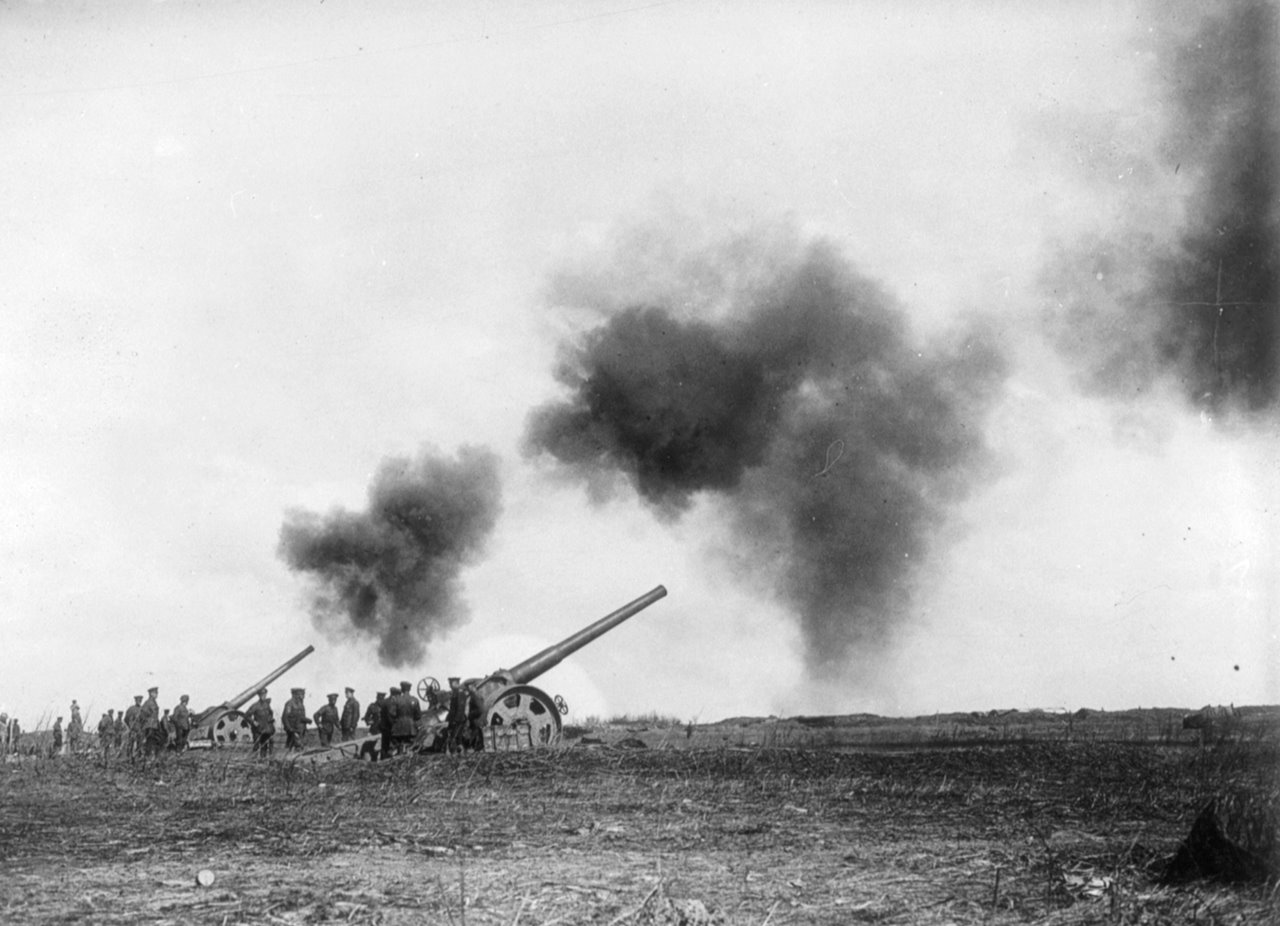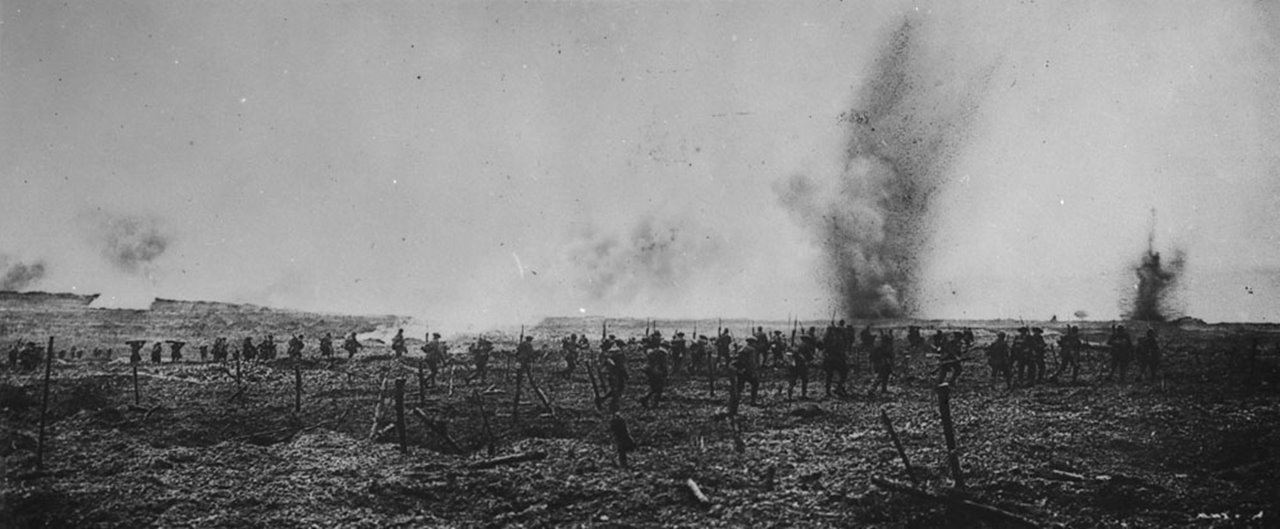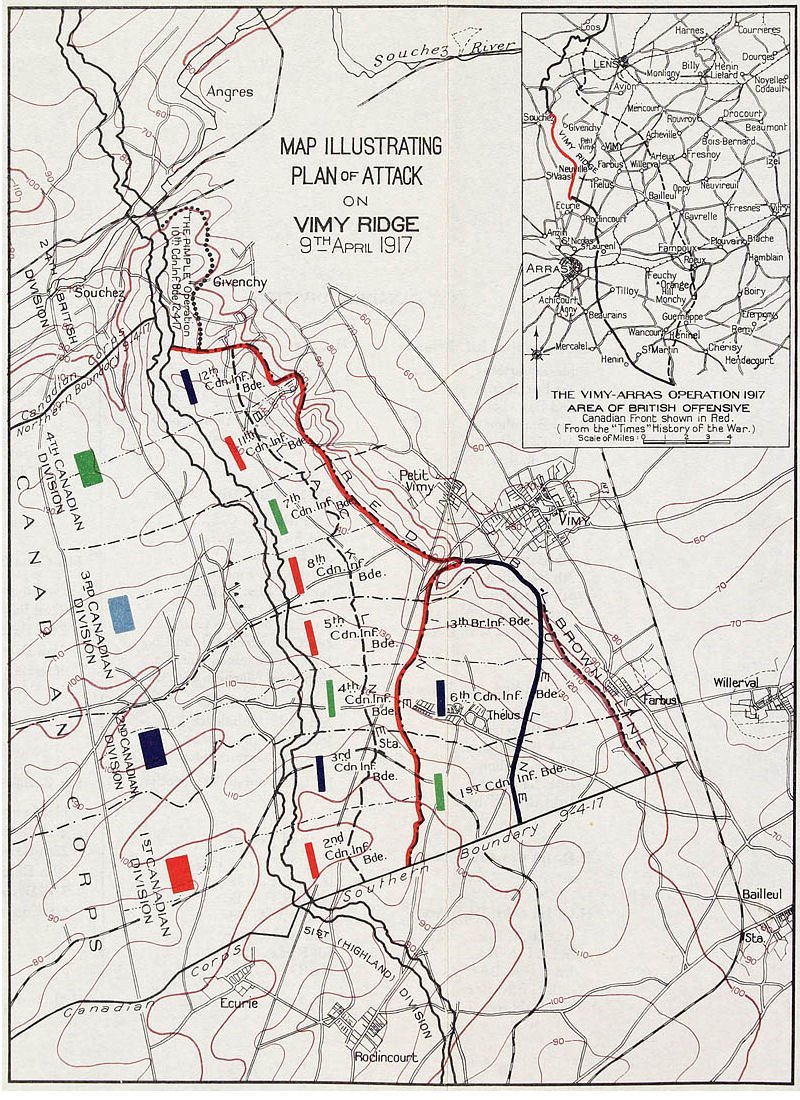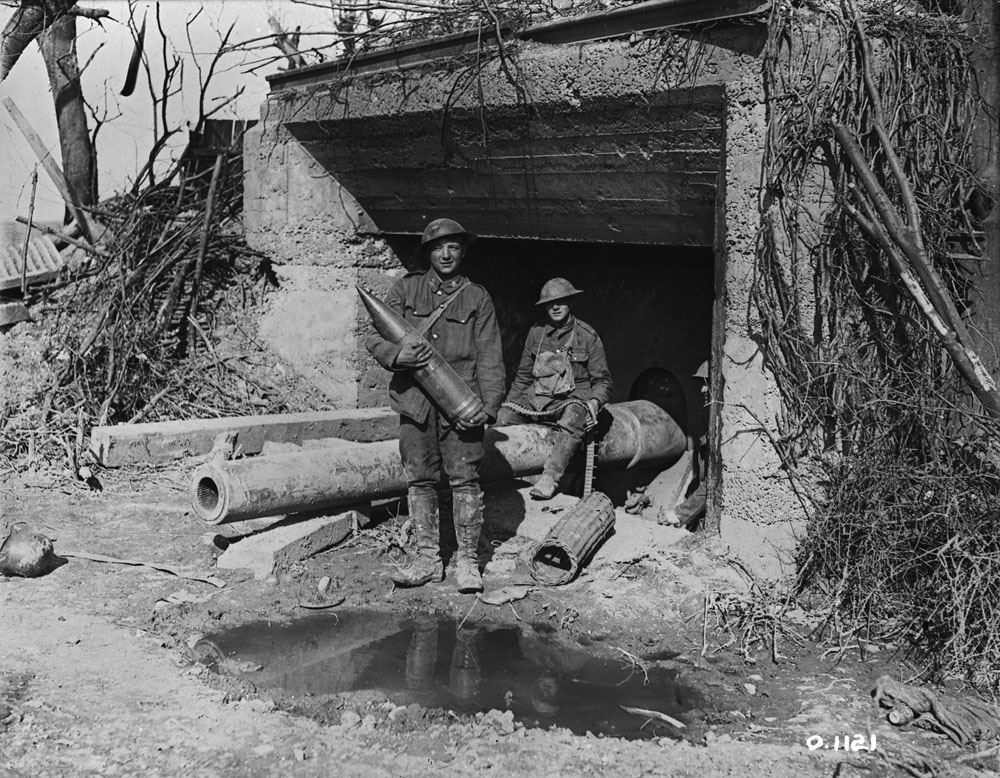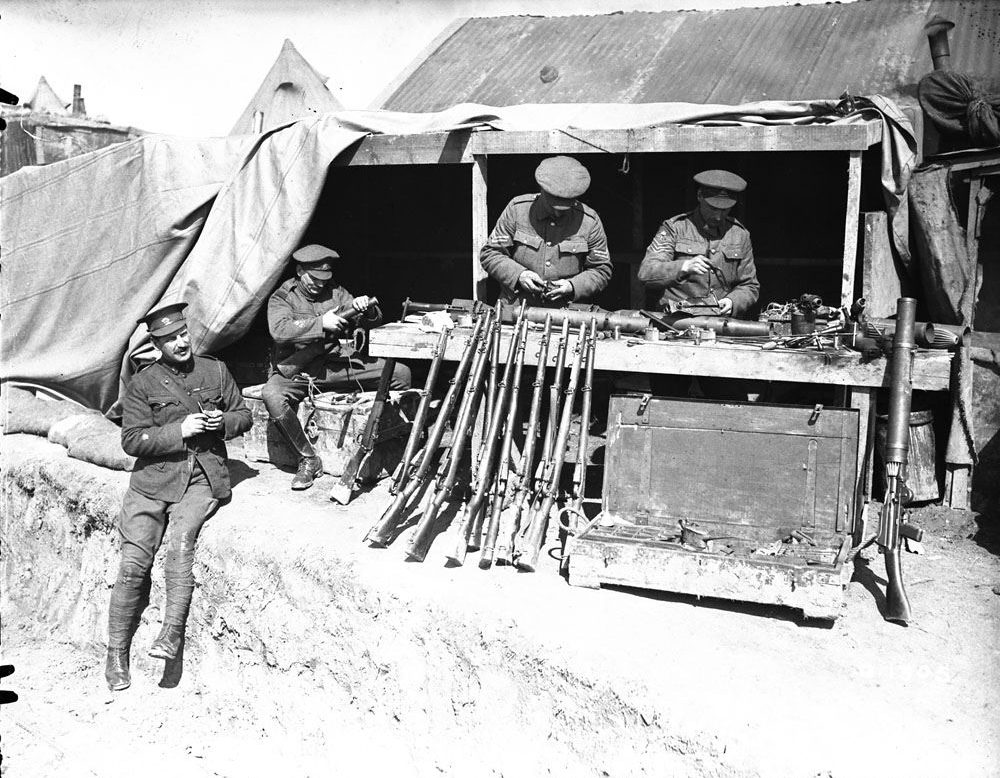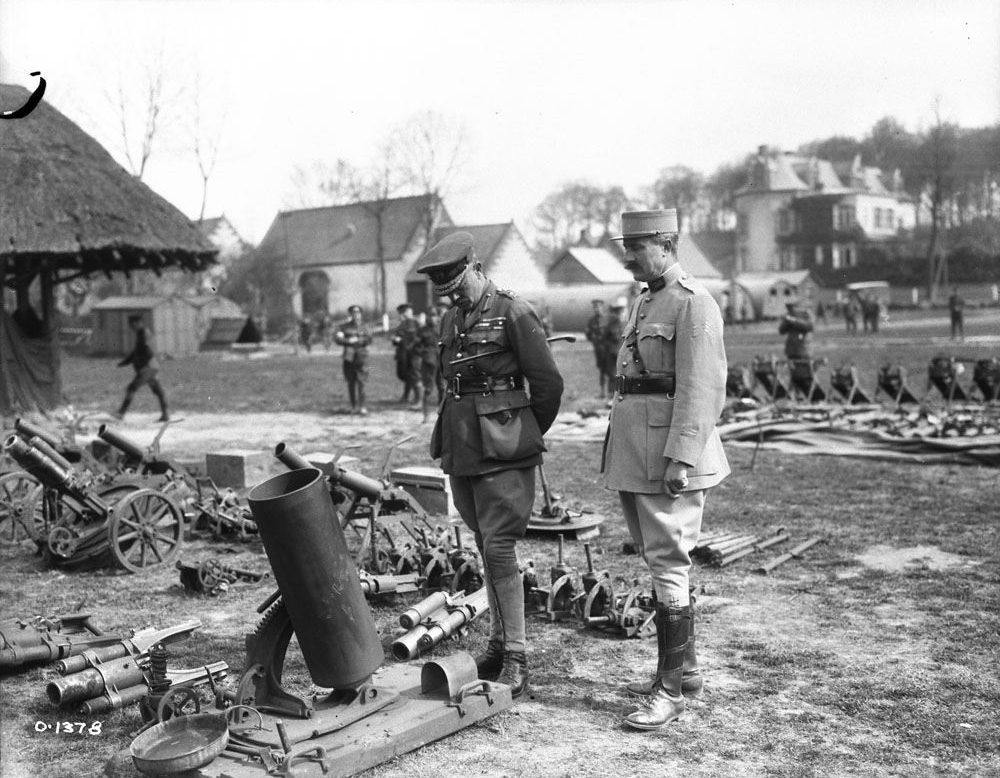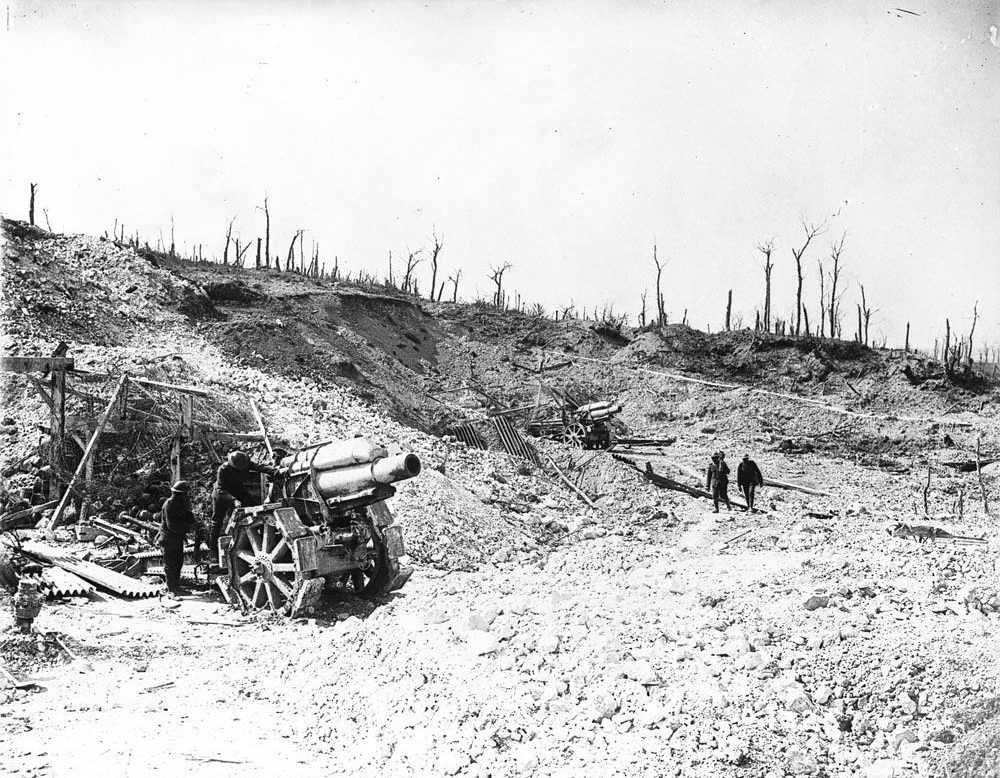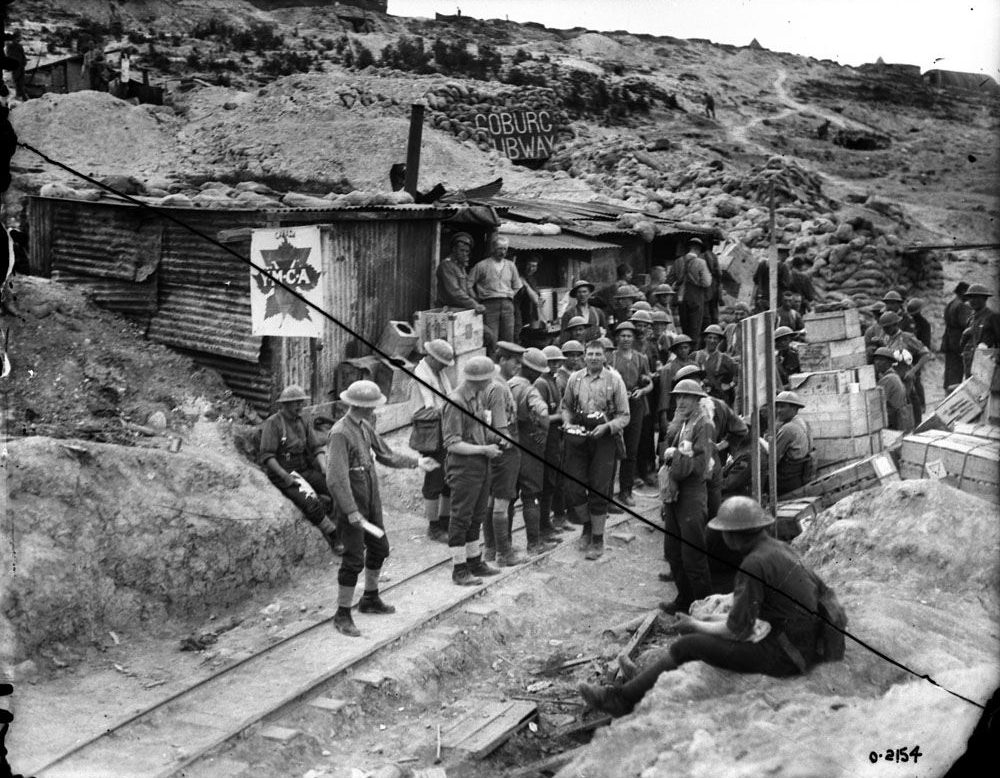Zero Hour, "Oh" Five Thirty
Tick tock, tick tock. Thousands of Canadian soldiers waited tensely in the dark; some occupied their time with tasks that would take their mind from the coming whirlwind. Meanwhile, the hours and then the seconds spiraled away as the time of the attack approached.
Factors Favouring the Canadian Side during the Attack:
1. The Canadians did not have to cope with a “Week of Suffering.”
2. Julian Byng had been at Vimy since Feb. 1916, but with British soldiers. He was familiar with the terrain and also realized that the British and French needed to learn from past mistakes and incorporate new solutions, especially those learned at Verdun and the Somme. In May he was ordered to command the Canadians.
3. The experienced Byng (along with Arthur Currie who was, at that time, in command of the 1st Division) incorporated new solutions that included: better planning, more thorough training, detailed reconnaissance from airplanes and balloons, artillery targeting, and platoon tactics.
4. Canadian forces had created an engineered underground “city” with tracked carts, water piping, lighting, stock and supply rooms, weapon dumps, command and other posts, hospitals, sleeping areas, and so on. This infrastructure allowed Byng to move many battalions very close to the front while keeping them fed, rested, and protected underground.
5. Trench raiding occurred frequently and an abundance of current information was often available.
6. Weather conditions at the time of attack (blinding sun, swirling fog, snow, etc.) helped hide the attacking Canadians on multiple occasions.
7. Canadian forces estimated that their “pouring of shells” into German territory had destroyed 80 – 85 % of the opposing artillery.
8. Surprise! The Germans knew that an attack was coming, but they didn’t know when.
And then suddenly at 05:30, April 9, 1917 . . .
And over the top went the first soldiers of 20,000 to attack that day.
The Battle of Vimy Ridge, Animated
An Animated Map of the Battle showing April 8 - 12, 1917
For a more interactive version, please visit: Valour Canada’s “Battle of Vimy Ridge”, Animated (Hosted by Animaps)
Map Notes:
1. The map only shows the last day of the Canadians shelling the German positions. (The Germans’ “Week of Suffering” was the result of intensive artillery bombardment from April 2-8 – this is shown by the stationary cloud during the first day.)
2. Attacking Canadians were much closer to the rear edge of the creeping barrage than is shown in this animation. The creeping barrage began at 05:30 on the 9th and as shown by the cloud, moves east/northeast.
3. All times and locations are approximate.
4. Most of the casualties occurred during the first thrust of the attack on April 9.
Timeline of the Infantry Advance:
9 April 1917
05:30 20 000 of 100 000 Canadians attack in platoon formations led by the creeping barrage and with snow and sleet at their backs.
06:25 1, 2, and 3 Divisions have reached Objective 1: Black Line (dashed on map); 4 Division is struggling.
07:10 1 and 2 Division have reached Objective 2: Red Line.
07:30 3 Division has reached Objective 2: Red Line, but is enfiladed by Hill 145 so 3rd Div sets up flank defence to the north. 4 Division regrets asking the artillery to avoid shelling a few German trenches as they are getting hammered between the Pimple and Hill 145.
11:00 1 and 2 reach Objective 3: Blue Line, Hill 135 and Thelus are captured.
14:00 1 and 2 reach Objective 4: Brown Line, dig in.
19:00 After a seesaw battle, western portion of Hill 145 finally taken by 85th Nova Scotia Highlanders (4th Div).
10 April 1917
06:00 1, 2, and 4 Division gets fresh troops. 4 Division (44 and 50th battalions) takes eastern side of Hill 145 by bayonet charging German machine positions and with the help of artillery.
11 April 1917
all day Consolidation and digging in.
Unit Home
Arras Offensive. Field of Battle. Topographic Advantage. Week of Suffering. Richard Jack Painting.
J.G. Pattison, Victoria Cross
40 year old Calgarian. Video Biography. Victoria Crosses. Milne. Sifton. MacDowell. Prisoners.

